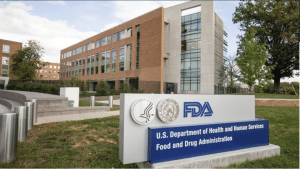 The pharmaceutical and biologics industry recently received updated FDA guidance on the use of Generally Accepted Scientific Knowledge (GASK) in regulatory submissions.
The pharmaceutical and biologics industry recently received updated FDA guidance on the use of Generally Accepted Scientific Knowledge (GASK) in regulatory submissions.
The FDA guidance provides new examples of when it is applicable to leverage GASK data to meet safety requirements required in a new drug application. Clinical information in the drug discovery data that supports the nonclinical safety of a drug can contain GASK citations. Additionally, the citations would be based on existing clinical studies that have been validated by FDA in approved products on the market.
What is GASK?
Generally Accepted Scientific Knowledge refers to information and methods widely considered as accepted by life science industry experts. It can include established scientific principles, published papers, and best practices that have passed the regulatory scrutiny of drug development. GASK is most often utilized during the evaluation of safety and efficacy data of regulated products.
FDA Approval
The FDA guidance elaborates on the process of FDA regulators and how new drug applications are evaluated. Further, the FDA often requires life science companies to provide a significant amount of regulatory data to support safety and efficacy claims.
This regulatory clinical research often comes from clinical trials, preclinical studies, and other types of scientific data sources. However, in scenarios where there may be limited clinical trial data conducted, GASK can be used to provide supporting documentation for regulatory compliance.
Drug Development
Life science companies are required to offer nonclinical information to support regulatory approval of a New Drug Application (NDA) or Biologics License Application (BLA). Additionally, the FDA guidance elaborates on how nonclinical information helps the Agency focus on important matters, such as:
- Identifying pharmacological effects, including the mechanism of action of the drug in vitro and/or in vivo
- Identifying absorption, distribution, metabolism, and excretion of the drug in vitro and/or in animals
- Identifying possible consequences of exposure duration (e.g., chronic)
- Identifying risks for special populations (e.g., pediatrics)
Regulation Examples
The FDA guidance goes on to describe unique conditions in which sponsors have successfully used GASK in their product development program. Each sponsor cited these GASK resources to meet FDA’s regulatory approval requirements instead of conducting certain nonclinical studies:
- Products containing a substance that naturally occurs in the body. Sponsors submitted GASK regarding that substance and the known effects on biological processes.
- Demonstrated drug impact on a particular biological pathway. Sponsors submitted GASK regarding the impact and FDA regulators concluded specific nonclinical studies were not necessary to support drug approval and drug labeling.
Active Ingredient
The FDA guidance continues by listing examples of substances that are typically present in a healthy human body. For example, endogenous substances where the drug replaces a substance that should naturally be present but, for pathological reasons, a patient may lack sufficient amounts. The FDA approved drug may enable and help accelerate the proper functioning of the human body.
Pharmacological
Additionally, a key driver of using GASK for FDA approval is the patient who has been prescribed a drug & the pharmacological impact experienced. Existing human pharmacokinetic studies and toxicology studies are recommended and may support the approval of the regulatory application. Specifically, regulators wil look to examine if the drug helps increase the level of the endogenous substance to the level of a healthy individual.
Diet
Further, exogenous substances that are already present in a patient’s diet may help expedite U.S. Food and Drug Administration approval. This scenario includes a patient’s exposure to an unmodified food substance that doesn’t exceed typical levels of dietary exposure when the drug is taken orally. The FDA guidance also states that certain nonclinical studies may be unnecessary based on the relevance of the exogenous substance to the clinical research submitted.
New Drug Application
If an FDA sponsor utilizes GASK information in their new product application, they must submit justification in the appropriate regulatory submission filing (e.g. BLA submission, 510(k) submission, etc.). The FDA guidance recommends as early as possible in product development to the assigned FDA regulator.
Finally, food and drug regulation feedback would be provided to the sponsor for the proposed regulatory strategy for approval. The FDA submission should incorporate evidence for the use of GASK, including textbook excerpts and/or non-product-specific published literature.
About Regulatory Compliance Associates (RCA)
Regulatory Compliance Associates (RCA) has helped thousands of pharmaceutical companies meet regulatory, compliance, quality assurance, and remediation challenges. With more than 20 years of experience with FDA, Health Canada, EU and global regulatory agencies worldwide, Regulatory Compliance Associates® offers leading pharmaceutical consultants. We’re one of the few pharma consulting companies that can help you navigate the challenges associated with industry regulations.
Our pharmaceutical consulting firm includes over 500 seasoned FDA, Health Canada & EU compliance consultants and regulatory affairs experts who understand industry complexities. It’s a pharma consultancy founded by regulatory compliance executives from the pharmaceutical industry. Every pharmaceutical industry consultant on the Regulatory Compliance Associates team knows the unique inner workings of the regulatory process.
Client Solutions
Whether you’re in the product planning, development or pharmaceutical lifecycle management stage or need a remediation strategy for a compliance crisis, Regulatory Compliance Associates will guide you through every pharmaceutical consulting step of the regulatory process. Our pharmaceutical consulting Experts will create a customized approach depending on your product and company’s individual needs. Our regulatory compliance clients include:
- Companies new to FDA, Health Canada or EU regulations and regulatory compliance
- Start-up organizations with novel submissions to 510(k) submissions from multi-national corporations
- Investment firms seeking private equity due diligence for pre-acquisition and post-deal research
- Law firms seeking pharmaceutical consulting firm expertise in the remediation of warning letters, consent decrees, 483’s or import bans
Regulatory Affairs
Regulatory affairs is Regulatory Compliance Associates backbone. We exceed other pharma consulting companies with industry experts experienced in complexities of the pharmaceutical and biopharmaceutical industries. Our pharma consulting expertise spans all facets and levels of Regulatory Affairs. Additionally, we specialize in Regulatory Support for New Products to Life Cycle Management, Outsourced Regulatory Affairs, Submissions, Training, and more.
As your partner, we can negotiate the potential assessment minefield of regulatory compliance services with insight, hindsight, and the clear advantage of our breadth and depth of knowledge and regulatory compliance consulting. We offer the following pharma consulting regulatory affairs services for pharmaceutical companies.
- New Product Support
- Product Lifecycle
- Other Regulatory Services
- Combination Products
Compliance Assurance
The regulations process surrounding pharmaceutical companies can be tricky for even the most experienced industry veteran to understand. Just one misstep could mean significant and lasting consequences for your business. At Regulatory Compliance Associates, we offer the pharma consulting experience and pharma consultants necessary to guide you through the quality compliance process.
- Assessments
- Audits
- Regulatory Agency Response
- Preparation and Training
- Inspection Readiness
- Data Integrity
Quality Assurance
Regulatory Compliance Associates Quality consulting includes assessments, strategy, implementations, staff augmentations, and identification of quality metrics to ensure continuous improvement. Our pharma consultants understand the strategic thinking needed to align your business needs and goals. Regulatory Compliance Associates quality assurance services include quality experts with experience spanning major corporations and start-ups. Our pharmaceutical consulting firm knows firsthand how to achieve, maintain, and improve quality. Finally, our regulatory compliance services team excels in transferring continuous improvement knowledge to your organization.
- 21 CFR Part 11
- Data Integrity
- Manufacturing Support
- Facility Support
- Quality Metrics
Remediation Services
Regulatory Compliance Associates has a proven remediation services approach to managing FDA Warning Letters, Consent Decrees, Remediation and other serious regulatory situations. Our pharma consultants know how to partner with executive, legal, and communication teams. Each RCA pharma consulting Expert will develop a response that will be accepted by the regulatory agency and be realistic to execute.
Regulatory Compliance Associates pharma regulatory consultants will develop a comprehensive proof book of documented evidence demonstrating the corrective action taken to remediate non-compliant issues. In addition, each Regulatory Compliance Associates pharma consulting Expert understands compliance enforcement. We’ll prepare a comprehensive pharma consulting strategy to assist in your remediation efforts, drive continuous improvement, and maintain regulatory compliance with the regulations.
- Regulatory Action
- Regulatory Compliance
- Regulatory Enforcement
- Warning Letter
- 483 Observation
- Oversight Services
- Risk Management Plan
About Regulatory Compliance Associates
 Regulatory Compliance Associates® (RCA) provides pharmaceutical consulting to the following industries for resolution of life science challenges:
Regulatory Compliance Associates® (RCA) provides pharmaceutical consulting to the following industries for resolution of life science challenges:
- Life Sciences
- Pharmaceutical
- Biologic & Biotechnology
- Sterile compounding
- Medical device
- Lab Testing
We understand the complexities of running a life science business and possess areas of expertise that include every facet of R&D, operations, regulatory affairs, quality, and manufacturing. We are used to working on the front lines and thriving in the scrutiny of FDA, Health Canada, MHRA and globally-regulated companies.
As your partners, Regulatory Compliance Associates can negotiate the potential minefield of regulatory compliance and regulatory due diligence with insight, hindsight, and the clear advantage of our unique expertise and experience.
- Founded in 2000
- Headquartered in Wisconsin (USA)
- Expertise backed by over 500 industry subject matter experts
- Acquired by Sotera Health in 2021
About Sotera Health
The name Sotera Health was inspired by Soteria, the Greek goddess of safety, and reflects the Company’s unwavering commitment to its mission, Safeguarding Global Health®.
Sotera Health Company, along with its three best-in-class businesses – Sterigenics®, Nordion® and Nelson Labs®, is a leading global provider of mission-critical end-to-end sterilization solutions and lab testing and advisory services for the healthcare industry. With a combined tenure across our businesses of nearly 200 years and our industry-recognized scientific and technological expertise, we help to ensure the safety of over 190 million patients and healthcare practitioners around the world every year.
We are a trusted partner to 5,800+ customers in over 50 countries, including 40 of the top 50 medical device companies and 9 of the top 10 pharmaceutical companies.
Commitment to Quality
Our Certificate of Registration demonstrates that our Quality Management System meets the requirements of ISO 9001:2015, an internationally recognized standard of quality.


 Regulatory Compliance Associates® (
Regulatory Compliance Associates® (